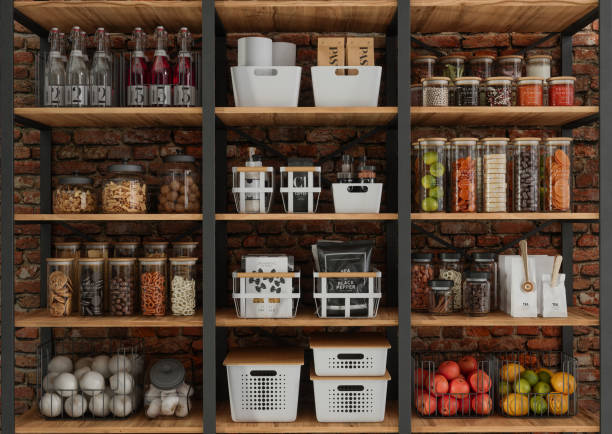Streamlining cooking workflows with smart cabinet organization
Smart cabinet organization reduces friction in everyday cooking by arranging cookware, utensils, and tableware where they are most useful. Thoughtful storage choices, durable materials, and attention to ergonomics can shorten mealprep time, simplify cleaning and maintenance, and support more sustainable habits in the kitchen.

Efficient cabinet organization transforms how a kitchen performs during foodprep, turning cluttered spaces into predictable, ergonomic systems. By grouping items according to task — for example, storing cutting boards and knives near a prep counter and pots and pans near the stove — cooks can move through routines with fewer steps. Durable materials and regular maintenance reduce wear, while space-saving fittings and mindful placement of appliances and tableware help sustain consistent, low-effort mealprep habits.
How can cookware and utensils be organized for accessibility?
Locate frequently used cookware and utensils where they support the flow of tasks. Keep daily cookware (one or two skillets, a saucepan) on lower shelves or pull-out trays near the cooktop; hang or drawer-store utensils used for stirring and flipping for quick reach. Use adjustable dividers and shallow drawers for forks, spoons, spatulas and whisks to avoid rummaging. Clear containers or labeled baskets can hold specialty tools so they remain visible but contained.
Where should tableware and foodprep items be stored?
Store plates, bowls and drinking glasses in upper cabinets above or adjacent to the dishwasher and primary prep areas to minimize carrying. Reserve deeper cabinets or a pantry zone for bulk foodprep items like baking sheets, mixing bowls and storage containers. Grouping tableware by frequency of use and function — everyday vs. occasional — keeps daily routines efficient while preserving space for seasonal or infrequent pieces.
What storage and space-saving fixtures improve ergonomics?
Pull-out shelves, lazy Susans and tilt-out trays reduce bending and reaching, supporting an ergonomic workflow. Vertical dividers work well for baking sheets and cutting boards, while tiered shelf risers make lids and plates easier to see and retrieve. Installing organizers that bring contents forward prevents awkward twisting motions and can be especially helpful in lower cabinets to reduce strain during busy mealprep periods.
How do appliances and materials affect cabinet layout?
Place small appliances in locations that match their use: keep the toaster near breakfast prep zones, the mixer near baking storage, and frequently used countertop appliances close to power outlets. Choose cabinet materials and finishes that withstand moisture and cleaning; solid-core shelving or laminated plywood resists warping under heavy cookware. Consider heat-resistant and easy-to-clean surfaces for shelves near ovens or stoves to streamline maintenance and prolong lifespan.
How to incorporate sustainability, maintenance, and cleaning?
Select storage materials and organizers with long lifespans — stainless steel racks, solid wood shelves, or high-quality polymers — to reduce replacements. Keep cleaning supplies in a dedicated under-sink cabinet with spill-proof containers and moisture control to protect materials. Regularly declutter and repair rather than replace: repairing hinges, reattaching drawer runners, and reconfiguring shelving can lower waste and extend usable life, supporting more sustainable kitchen practices.
What organization supports efficient mealprep workflows?
Design zones that map to common workflows: a prep zone with knives, cutting boards and bowls; a cooking zone with pots, pans and utensils; a plating zone with plates and serving utensils; and a cleanup zone near the sink and dishwasher. Use consistent containers and labeling for spices, oils and staples to speed ingredient retrieval. Space-saving strategies such as stacking cookware by size and nesting bowls reduce time spent searching and make transitions between steps more fluid.
Conclusion Intentional cabinet organization reduces steps and cognitive load during cooking by aligning storage with how tasks are actually performed. Applying ergonomic principles, selecting durable materials, and creating clear zones for cookware, utensils, tableware and appliances streamline mealprep and cleaning. Regular maintenance and mindful, sustainable choices help preserve the system over time, making everyday foodprep more reliable and comfortable without adding complexity.





